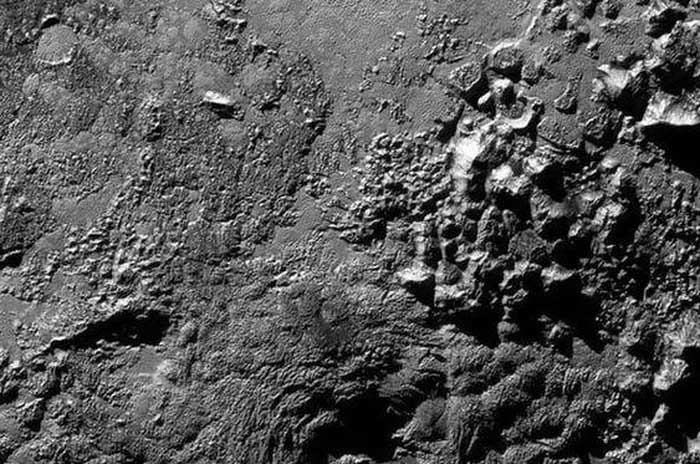The universe is filled with many mysteries yet to be unraveled. The discovery of gigantic ice volcanoes on Pluto indicates that this dwarf planet is not just an icy sphere as previously thought.
Data sent back from NASA’s New Horizons spacecraft during its flyby of Pluto in July 2015 revealed an intriguing finding about these ice volcanoes. Scientists speculate that the last time they were active may have been around 100 to 200 million years ago.

Pluto’s surface features ice volcanoes.
This dwarf planet contains massive ice volcanoes, some measuring tens to hundreds of kilometers wide, with heights reaching up to 7,000 meters. The two largest ice volcanoes here have been named Wright Mons and Piccard Mons by scientists. While Wright Mons stands nearly 5 kilometers tall and spans 150 kilometers, Piccard Mons reaches about 7 kilometers in height and extends 225 kilometers wide. In fact, the mass of Wright Mons is comparable to Mauna Loa in Hawaii, one of the largest volcanoes in the world.
Unlike volcanoes on Earth, these formations do not expel molten lava. Specifically, Kelsi Singer, a senior scientist at SwRI and a co-author of the study, stated: “We found a field of very large ice volcanoes that look unlike anything else we’ve seen in the Solar System.” They primarily consist of a mixture of ice, ammonia, nitrogen, and methane.
However, it remains undetermined whether this mixture exists in a liquid or solid state due to the extremely low temperatures on Pluto, where the average temperature is around -233 degrees Celsius, orbiting far from the Sun. Scientists believe it could be a slushy substance or a solid with flow characteristics.
The eruptions of these volcanoes on the dwarf planet are considered a plausible explanation for the rugged surface and the erosion of the terrain that has occurred over tens of millions of years.
It is known that Pluto once had an ocean beneath its surface, and the discovery of these ice volcanoes signals that the subsurface ocean may still exist. Thus, a location with a water source near the surface that is not too cold presents a possibility for potential life.
Nevertheless, all of this remains speculative, and scientists are continuing to conduct further research on this phenomenon.


















































